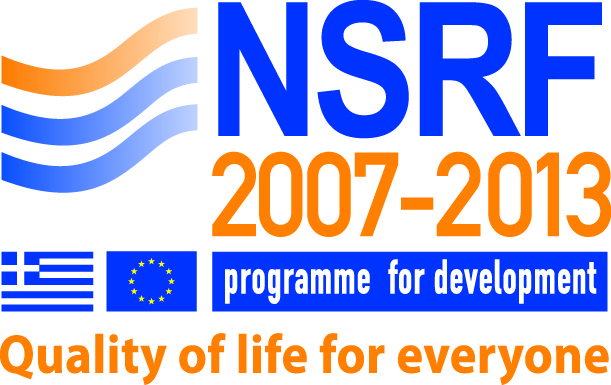Please use this identifier to cite or link to this item:
https://olympias.lib.uoi.gr/jspui/handle/123456789/8859Full metadata record
| DC Field | Value | Language |
|---|---|---|
| dc.contributor.author | Tsimihodimos, V. | en |
| dc.contributor.author | Gazi, I. | en |
| dc.contributor.author | Filippatos, T. | en |
| dc.contributor.author | Kostapanos, M. | en |
| dc.contributor.author | Lagos, K. | en |
| dc.contributor.author | Kostara, C. | en |
| dc.contributor.author | Tellis, C. C. | en |
| dc.contributor.author | Elisaf, M. | en |
| dc.contributor.author | Tselepis, A. D. | en |
| dc.date.accessioned | 2015-11-24T16:44:58Z | - |
| dc.date.available | 2015-11-24T16:44:58Z | - |
| dc.identifier.issn | 0021-9150 | - |
| dc.identifier.uri | https://olympias.lib.uoi.gr/jspui/handle/123456789/8859 | - |
| dc.rights | Default Licence | - |
| dc.subject | pre beta-1 hdl | en |
| dc.subject | hdl subfractions | en |
| dc.subject | dyslipidemia | en |
| dc.subject | metabolic syndrome | en |
| dc.subject | high-density-lipoprotein | en |
| dc.subject | cholesteryl ester transfer | en |
| dc.subject | apolipoprotein-a-i | en |
| dc.subject | phospholipid transfer protein | en |
| dc.subject | pre-beta-hdl | en |
| dc.subject | cell-derived cholesterol | en |
| dc.subject | coronary-heart-disease | en |
| dc.subject | diabetes-mellitus | en |
| dc.subject | intervention trial | en |
| dc.subject | insulin-resistance | en |
| dc.title | Plasma triglyceride levels and body mass index values are the most important determinants of pre beta-1 HDL concentrations in patients with various types of primary dyslipidemia | en |
| heal.type | journalArticle | - |
| heal.type.en | Journal article | en |
| heal.type.el | Άρθρο Περιοδικού | el |
| heal.identifier.primary | DOI 10.1016/j.atherosclerosis.2009.07.038 | - |
| heal.identifier.secondary | <Go to ISI>://000273989200037 | - |
| heal.identifier.secondary | http://ac.els-cdn.com/S0021915009006054/1-s2.0-S0021915009006054-main.pdf?_tid=f5144a3130a8b150a51f01c62a34786c&acdnat=1333112249_9e16d94c9b1667a9f99a84efc92902b7 | - |
| heal.language | en | - |
| heal.access | campus | - |
| heal.recordProvider | Πανεπιστήμιο Ιωαννίνων. Σχολή Θετικών Επιστημών. Τμήμα Χημείας | el |
| heal.publicationDate | 2010 | - |
| heal.abstract | Objective: Experimental studies have shown that the pre beta-1 subclass of high-density lipoprotein particles (pre beta-1 HDL) may play an important role in the reverse cholesterol transport pathway as the initial acceptors of cellular cholesterol. The aim of the present study was the direct comparison of pre beta-1 HDL values in individuals with various types of primary dyslipidemias. Methods: Four hundred and eighty-six unrelated individuals were included in the study. According to their lipid values study participants were subdivided into four groups: control group (n = 206), type IIA dyslipidemia group (n = 148), type IIB dyslipidemia group (n = 49) and type IV dyslipidemia group (n = 83). Results: All dyslipidemic patients displayed higher concentrations of pre beta-1 HDL compared to control individuals. However, patients with dyslipidemias characterized by an abnormal catabolism of triglyceride-rich lipoproteins (such as dyslipidemias of type IIB and IV) tend to have higher pre beta-1 HDL values compared to patients with hypercholesterolemia, and this increase is proportional to the degree of hypertriglyceridemia. In addition, patients with metabolic syndrome exhibited significantly higher levels of pre beta-1 HDL compared to individuals that do not fulfill the criteria for the diagnosis of this syndrome. Multiple regression analysis revealed that serum triglyceride concentrations and body mass index (BMI) values were the most important determinants of pre beta-1 HDL levels in our population. Conclusion: All dyslipidemic patients exhibit increased pre beta-1 HDL concentrations as compared to normolipidemic individuals. Whether this increase represents a defensive mechanism against atherosclerosis or it is indicative of impaired maturation of HDL particles and thus of a defective reverse cholesterol transport mechanism remains to be established. (C) 2009 Elsevier Ireland Ltd. All rights reserved. | en |
| heal.publisher | Elsevier Ireland | en |
| heal.journalName | Atherosclerosis | en |
| heal.journalType | peer reviewed | - |
| heal.fullTextAvailability | TRUE | - |
| Appears in Collections: | Άρθρα σε επιστημονικά περιοδικά ( Ανοικτά). ΧΗΜ | |
Files in This Item:
| File | Description | Size | Format | |
|---|---|---|---|---|
| Tsimihodimos-2010-Plasma triglyceride.pdf | 233.34 kB | Adobe PDF | View/Open Request a copy |
This item is licensed under a Creative Commons License





